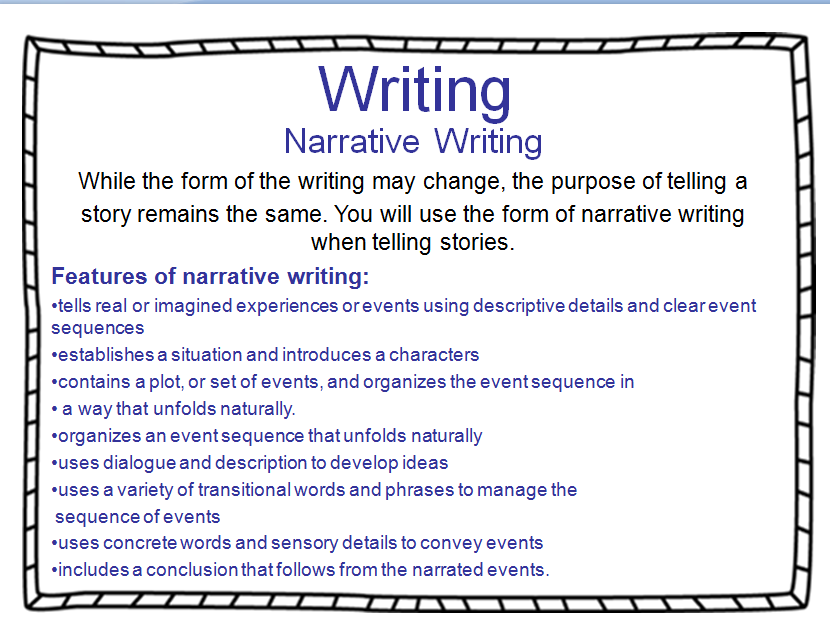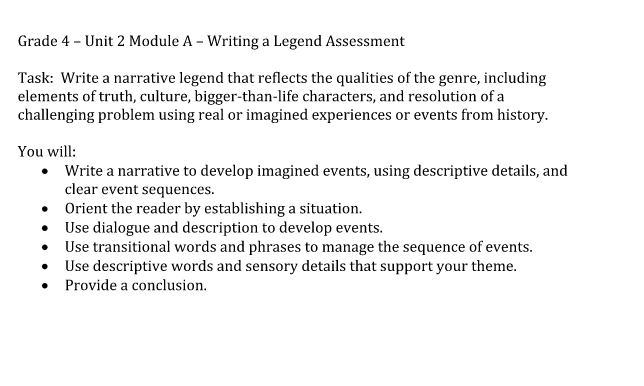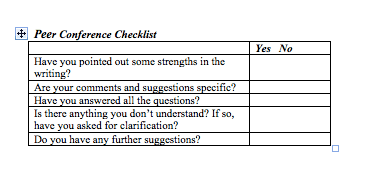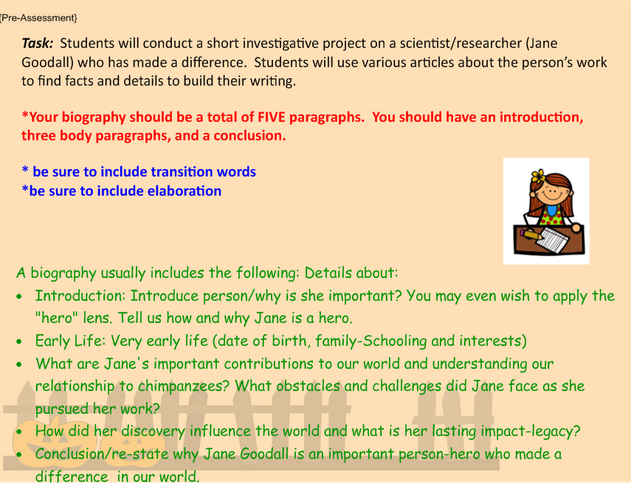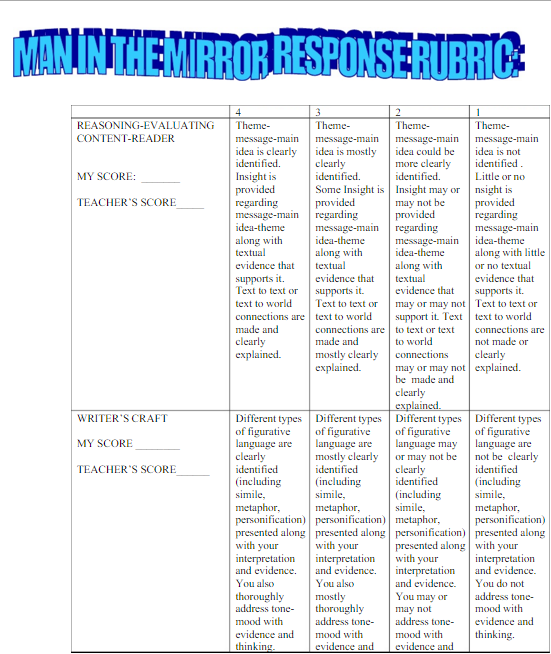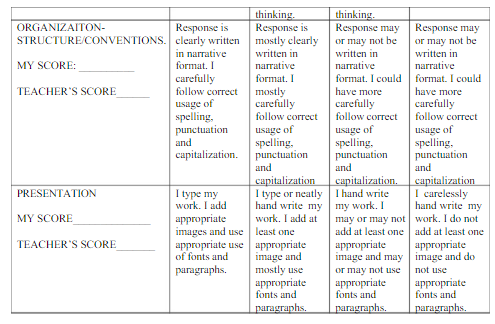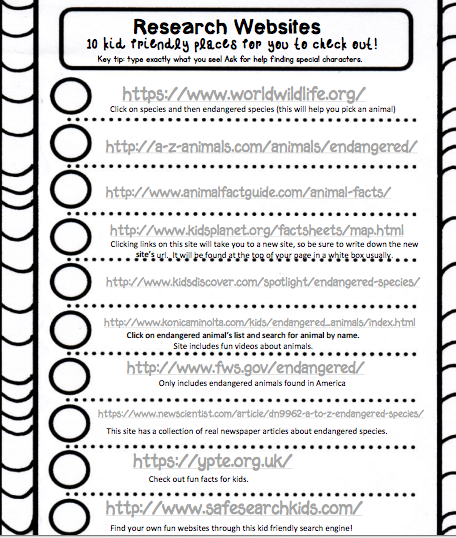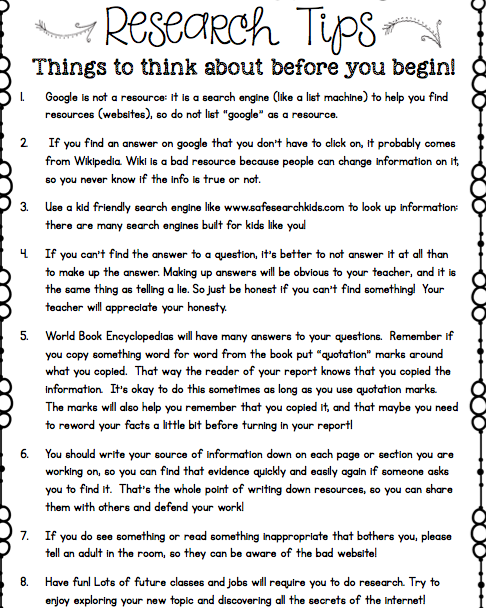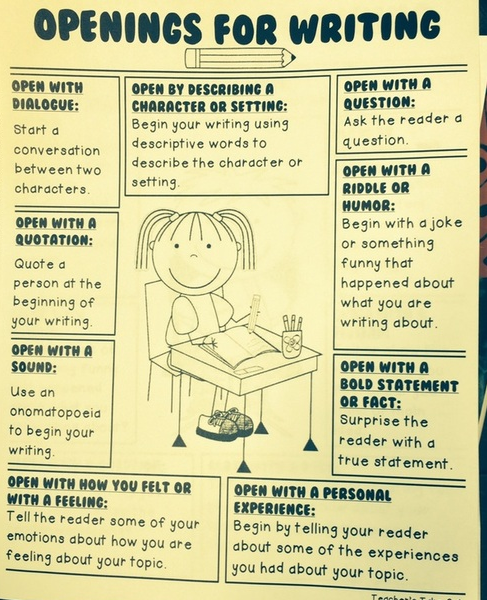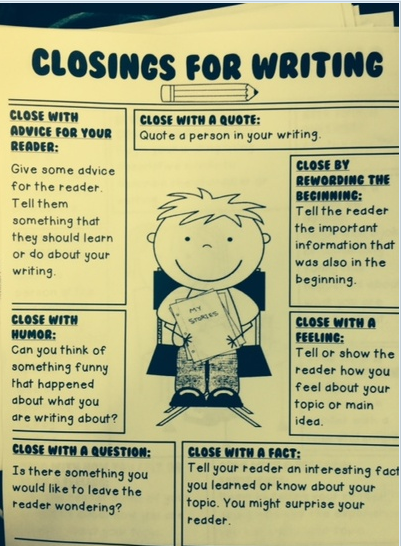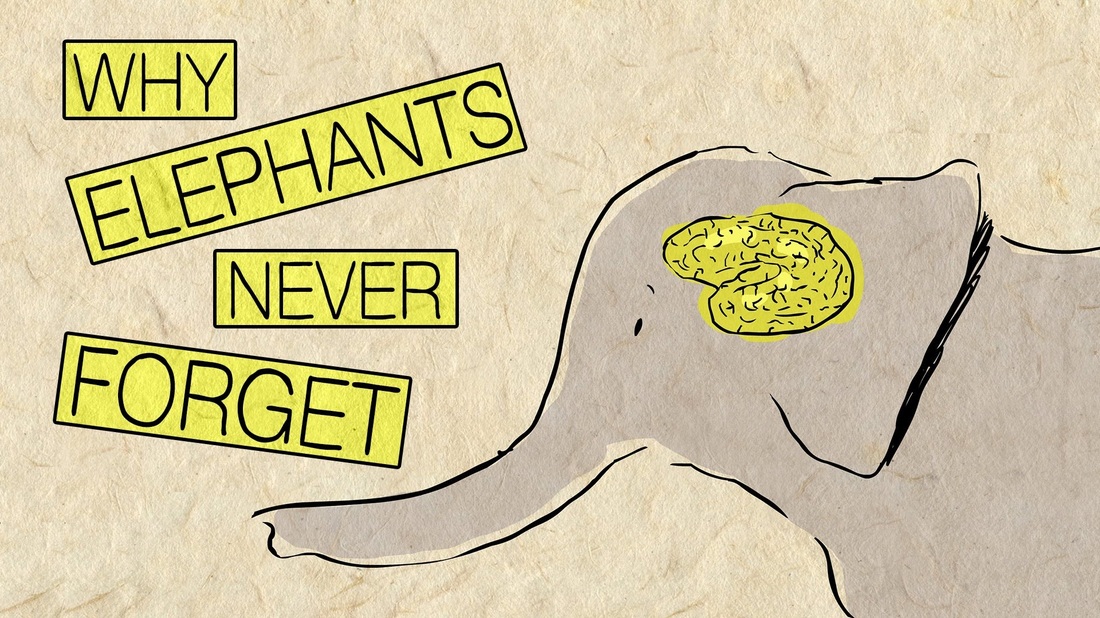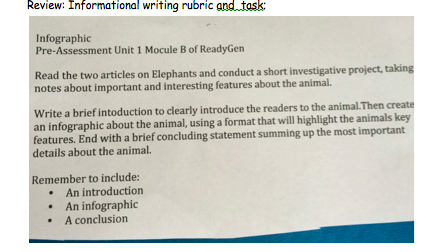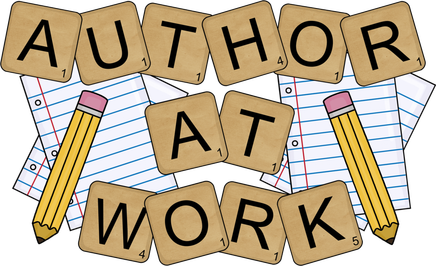WRITING BOOK REVIEWS FOR OUR ANIMAL ISSUES BOOK CLUB BOOKS: http://teacher.scholastic.com/writewit/bookrev/index.htm
| bookreview_tips.pdf | |
| File Size: | 964 kb |
| File Type: | |
| writing_strategies_for_persuasive_reviews.docx | |
| File Size: | 131 kb |
| File Type: | docx |
| bookreview_rubric.pdf | |
| File Size: | 58 kb |
| File Type: | |
EXTENDED METAPHORS:
| extendedmetaphor4315.doc | |
| File Size: | 995 kb |
| File Type: | doc |
| extendmetpoemrubric.pdf | |
| File Size: | 78 kb |
| File Type: | |
ODES: CELEBRATING THE ORDINARY IN AN EXTRAORDINARY WAY. USE LOTS OF FIGURATIVE LANGUAGE.
BE AS SPECIFIC AS POSSIBLE.....WHEN YOU ARE DESCRIBING SOMEONE OR SOMETHING...
WHAT DOES IT LOOK LIKE?
SOUND LIKE?
FEEL LIKE?
IF APPLICABLE: SMELL LIKE?
SLOW IT DOWN AND PAINT A PICTURE WITH WORDS
| oderubric.docx | |
| File Size: | 234 kb |
| File Type: | docx |
NARRATIVE WRITING: LEGENDS--LESSONS ARE COMPILED TO HELP GUIDE YOUR WORK AS YOU DRAFT YOUR ORIGINAL LEGENDS-MYTHS.
| narrative_writing_lessons_for_legends_to_assist_you_as_you_draft_your_own_legends.docx | |
| File Size: | 1106 kb |
| File Type: | docx |
NARRATIVE WRITING: LEGENDS
THIS IS WHERE WE ARE HEADED:
| legendassessment2.docx | |
| File Size: | 166 kb |
| File Type: | docx |
LEGEND NARRATIVE WRITING RUBRIC:
| fictional_narrative_writing_rubric.docx | |
| File Size: | 17 kb |
| File Type: | docx |
LEGEND PARTNER ASSESSMENT CHECKLIST:
| fictional_writing_checklist_peer_assessment.docx | |
| File Size: | 122 kb |
| File Type: | docx |
SLIDE INTO WONDERLAND:
Link: Last week, we thought about daydreaming and a wishful thinking as we brainstorm ideas for our fantasies. Today, we will focus on sliding into wonderland or a magical place like Oz!
Teach: Last week, we read the Wizard of Oz and watched as Dorothy was transported from her home in Kansas to the magical land of Oz. Many fantasies deal with a person or persons visiting a magical world (Oz, Wonderland, Narnia, etc). The entrances into these worlds are many and varied—rabbit holes, looking glasses, dreams, wardrobes and magic carpets. Let’s take another ride on the Polar Express.
Do an interactive read aloud focusing on setting (time and place) along with conflict and quest—a search involving an adventurous journey. Conflict provides the tension in a story. Who (called opponents, villains or antagonists) or what will cause conflict by opposing or causing trouble in your fantasy. The causes of conflict and trouble need not be living organisms; they might be machines or natural forces. Let’s notice at least three causes or conflicts for the main character. Then we will work on transporting our main characters to a magical world and planning at least three causes of conflict that will stand in the character’s way of their quest.
Independent: Try writing your own slide into wonderland or visit to a magical world entry. Try this as a brainstormer:
One day after school, your best friend and you were walking in the school playground. You decided to slide down the sliding board. When you landed, you looked around in amazement. You were no longer in the school playground. Shortly afterwards, your friend slid into the strange world and joined you. Write a story about your experience. Make sure you answer the following questions:
Teach: Last week, we read the Wizard of Oz and watched as Dorothy was transported from her home in Kansas to the magical land of Oz. Many fantasies deal with a person or persons visiting a magical world (Oz, Wonderland, Narnia, etc). The entrances into these worlds are many and varied—rabbit holes, looking glasses, dreams, wardrobes and magic carpets. Let’s take another ride on the Polar Express.
Do an interactive read aloud focusing on setting (time and place) along with conflict and quest—a search involving an adventurous journey. Conflict provides the tension in a story. Who (called opponents, villains or antagonists) or what will cause conflict by opposing or causing trouble in your fantasy. The causes of conflict and trouble need not be living organisms; they might be machines or natural forces. Let’s notice at least three causes or conflicts for the main character. Then we will work on transporting our main characters to a magical world and planning at least three causes of conflict that will stand in the character’s way of their quest.
Independent: Try writing your own slide into wonderland or visit to a magical world entry. Try this as a brainstormer:
One day after school, your best friend and you were walking in the school playground. You decided to slide down the sliding board. When you landed, you looked around in amazement. You were no longer in the school playground. Shortly afterwards, your friend slid into the strange world and joined you. Write a story about your experience. Make sure you answer the following questions:
- Where are you?
- What is the place like?
- Do you meet any other people or creatures? If so, what are they like?
- What do you do?
- How do your friends behave? Why?
- What is your reaction to the strange place?
- How do you get back to your school playground?
- How much time has taken place?
- How do you feel about your experiences?
- WHAT LIFE LESSONS DID YOU LEARN AS A RESULT OF YOUR EXPERIENCES?
- Do you try to return? If so, what happens?
FANTASY CHECKLIST:
___My fantasy has a theme-important idea-life message that teaches the reader about life—that is clearly evident to my reader?
____ My story contains an important conflict with obstacles that my protagonist must overcome?
______ My protagonist’s quest-mission is clear.
______Obstacles-challenges are clear.
_______ My character’s “aha” life-changing moment is clear.
_______It is clear how the conflict-problem is resolved.
_______It is clear how the quest-mission is resolved.
______My story is a balance of narrative and dialogue.
_____I change paragraphs every time someone new is speaking or there is a clear movement in time or place.
____ I use transition words to indicate a shift-movement in time or place
_____ My opening scene introduces readers to my narrator and/or characters.
_____ My readers will relate to and be interested in the situation and the events I've planned to include.
_____ I imagined details and descriptions of my settings.
_____ I imagined details and descriptions of my events.
_____ I planned my characters' responses to the situations and events.
_____ I know how I will show my characters' responses.
_____ I thought of sensory details I can add.
_____ I know how my story or narrative will end.
_____My title provides a window-insight into the heart and soul-theme of my story
_____ I spent enough time planning this narrative or story.
___My fantasy has a theme-important idea-life message that teaches the reader about life—that is clearly evident to my reader?
____ My story contains an important conflict with obstacles that my protagonist must overcome?
______ My protagonist’s quest-mission is clear.
______Obstacles-challenges are clear.
_______ My character’s “aha” life-changing moment is clear.
_______It is clear how the conflict-problem is resolved.
_______It is clear how the quest-mission is resolved.
______My story is a balance of narrative and dialogue.
_____I change paragraphs every time someone new is speaking or there is a clear movement in time or place.
____ I use transition words to indicate a shift-movement in time or place
_____ My opening scene introduces readers to my narrator and/or characters.
_____ My readers will relate to and be interested in the situation and the events I've planned to include.
_____ I imagined details and descriptions of my settings.
_____ I imagined details and descriptions of my events.
_____ I planned my characters' responses to the situations and events.
_____ I know how I will show my characters' responses.
_____ I thought of sensory details I can add.
_____ I know how my story or narrative will end.
_____My title provides a window-insight into the heart and soul-theme of my story
_____ I spent enough time planning this narrative or story.
| fantasy_checklist.docx | |
| File Size: | 99 kb |
| File Type: | docx |
PEER CONFERENCES: TAKING A LOOK WITH A NEW SET OF EARS & EYES
Objectives –
All writers need encouragement and feedback. If you are going to grow as a writer, you’ll want to know what you are doing well as well as get suggestions on how to improve your writing.
Because the topic you have chosen is a personal one, you are so familiar with it that you may have left information out or neglected to explain something adequately. This is where a conference partner can help. A conference partner can tell you what he or she sees-, ask relevant questions and make helpful suggestions. By exchanging ideas, you can refine your writing.
Conferences can take place any time during the writing process, but early conferences focus more on content – such things as what should be changed, added, or deleted.
*Responding to your partner
In this case, you are the reader, and it is your job to respond to someone else’s writing. This is a supportive role. By telling the writer what you see and by asking questions to clarify points, you will help improve your partner’s writing.
You are ready to respond to your partner.
Begin with a positive comment where you point out the strengths you see in the writing.
Next, answer any questions your partner has. In order to respond, you may have questions to ask as well. Go ahead and discuss your partner’s writing. Be sure your comments are specific. You may also have suggestions. Be sure the suggestions you give are constructive.
Use the peer conference checklist to be sure you have remembered everything.
- Confer with peers
- Practice the roles of presenter and responder
- Listen to understand and learn
All writers need encouragement and feedback. If you are going to grow as a writer, you’ll want to know what you are doing well as well as get suggestions on how to improve your writing.
Because the topic you have chosen is a personal one, you are so familiar with it that you may have left information out or neglected to explain something adequately. This is where a conference partner can help. A conference partner can tell you what he or she sees-, ask relevant questions and make helpful suggestions. By exchanging ideas, you can refine your writing.
Conferences can take place any time during the writing process, but early conferences focus more on content – such things as what should be changed, added, or deleted.
*Responding to your partner
In this case, you are the reader, and it is your job to respond to someone else’s writing. This is a supportive role. By telling the writer what you see and by asking questions to clarify points, you will help improve your partner’s writing.
You are ready to respond to your partner.
Begin with a positive comment where you point out the strengths you see in the writing.
Next, answer any questions your partner has. In order to respond, you may have questions to ask as well. Go ahead and discuss your partner’s writing. Be sure your comments are specific. You may also have suggestions. Be sure the suggestions you give are constructive.
Use the peer conference checklist to be sure you have remembered everything.
USE FANTASY WRITING RUBRIC AND CHECKLIST TO GUIDE YOUR CONVERSATIONS AND REVISIONS:
writerlylife.com/2010/09/how-to-use-dialogue-correctly/#.Uqn3Oo7A4UU
Revision strategies: Adding Details/Dialogue
Link: Today we will continue revising by using these two strategies: adding details and dialogue.
Teach: Listen to first paragraph vs. the second:
The cat fell off the roof.
The little kitten was shivering. The ice storm caught it by surprise. It had climbed up onto the slate roof. It was hard to get a footing and it slid right off.
Details: Slowing down action. Think about it in a certain way. Details of the shivering kitten. We can see it unfold in front of us. Think about a time or day. What was the weather like? Describe sounds, smells. Describe what things looked like and who was there. Sensory imagery is important. Do what you can to bring your reader into the story. Try adding details to a paragraph of a previously written piece of add something you are in the middle or just starting.
Using Dialogue
Dialogue is used to recreate conversation
It tells us how people treat each other
Reveals the personality of the characters by the way they talk
Creates immediacy
Dialogue uses real expressions as close to the truth as possible
Try finding a place in your story to add dialogue to enhance the big idea or show your characters’ personalities
Adding Narrative:
Find places where you have too much dialogue
Stop the conversation
Describe the setting/scenery.
Tell us more about the problem/conflict
Describe the characters with more details
Go inside the character’s head and describe what the main character is thinking/feeling and why!
Return to the conversation when you think you have provided enough background information/details!
ARCHETYPES: In literature, an archetype is a typical character, an action or a situation that seems to represent such universal patterns of human nature. An archetype, also known as universal symbol, may be a character, a theme, a symbol or even a setting. Many literary critics are of the opinion that archetypes, which have a common and recurring representation in a particular human culture or entire human race, shape the structure and function of a literary work. EX: Example #1 The Hero: He or she is a character who predominantly exhibits goodness and struggles against evil in order to restore harmony and justice to society e.g. Beowulf, Hercules, D’artagnan from “The Three Musketeers” etc. Example #2 The Mother Figure: Such a character may be represented as Fairy Mother who guides and directs a child, Mother Earth who contacts people and offers spiritual and emotional nourishment, and Stepmother who treats their stepchildren roughly. Some examples are: In Literature: Lucy and Madame Defarge from Dickens’ “A Tale of Two Cities”, Disely from Faulkner’s “The sound and The Fury”, Gladriel from “Lord of the Rings”, Glinda from the “Wizard of Oz” etc. In Fairy Tales: Characters such as the stepmother in “Cinderella”, fairy godmothers, Mother Goose, Little Red Riding Hood etc. In Mythology: The mythological figures of Persephone, Demeter, Hecate, Gorgon, Medusa
WORK ON FANTASY GRAPHIC ORGANIZERS AND CONSIDER THE FOLLOWING:
Fantasy: I can pay to characters by determining the characteristics of their fantasy heroes, heroines, supporting characters-sidekicks and villains and by incorporating sidekicks into our own fantasies.
Link: We have focused on the main characters in our stories. Today, we will focus on sidekicks and supporting characters.
Teach: In addition to good strong characters, we need to consider the supporting characters in our stories. In fantasy, non-human characters can be entertainingly delightful as well as aggravating and annoying. (Think Aladdin’s sidekick and many sidekicks in Beauty and the Beast). There are archetypes—predictable types of characters like the fairygod mother and the wicked stepmother, wise old man or woman, young prince or princess, evil magician or helping animal. (Model with a fairytale).
Independent: Pay attention to supporting characters. Describe what they are like and their relationships to the main characters. Open up fantasy graphic organizer and begin modeling with Wizard of Oz text (posted on website). Students may use this graphic organizer to assist them with their own stories.
Incorporating sidekicks into our fantasies. Think about who will be the supporting characters in your fantasy. Write another journal entry in the voice of your main character telling us more about the supporting characters. These may include friends or antagonists. Continue to focus on inner and outer conflicts. Describe them and tell the steps you think you need to take to overcome them. Remember that conflicts can be machines, forces and not just other characters. Create at least three causes of trouble or conflict for your main character. Describe them in details.
Link: We have focused on the main characters in our stories. Today, we will focus on sidekicks and supporting characters.
Teach: In addition to good strong characters, we need to consider the supporting characters in our stories. In fantasy, non-human characters can be entertainingly delightful as well as aggravating and annoying. (Think Aladdin’s sidekick and many sidekicks in Beauty and the Beast). There are archetypes—predictable types of characters like the fairygod mother and the wicked stepmother, wise old man or woman, young prince or princess, evil magician or helping animal. (Model with a fairytale).
Independent: Pay attention to supporting characters. Describe what they are like and their relationships to the main characters. Open up fantasy graphic organizer and begin modeling with Wizard of Oz text (posted on website). Students may use this graphic organizer to assist them with their own stories.
Incorporating sidekicks into our fantasies. Think about who will be the supporting characters in your fantasy. Write another journal entry in the voice of your main character telling us more about the supporting characters. These may include friends or antagonists. Continue to focus on inner and outer conflicts. Describe them and tell the steps you think you need to take to overcome them. Remember that conflicts can be machines, forces and not just other characters. Create at least three causes of trouble or conflict for your main character. Describe them in details.
FANTASY GRAPHIC ORGANIZER AND WIZARD OF OZ MENTOR TEXT:
|
Your browser does not support viewing this document. Click here to download the document.
Your browser does not support viewing this document. Click here to download the document.
|
| ||||||||||||
FANTASY OUTLINE: DUE MONDAY, DECEMBER 5
| fantasyoutline__1_.doc | |
| File Size: | 27 kb |
| File Type: | doc |
FANTASY WRITING RUBRIC FOR 4TH GRADE:
| fantasy_writing_rubric.doc | |
| File Size: | 33 kb |
| File Type: | doc |
Your browser does not support viewing this document. Click here to download the document.
FANTASY WORKSHOP:
Writing workshop: I can develop my fantasy characters by creating an outline and writing a journal entry in the voice of my main character. Even in fantasy, we need to create believable characters that readers can relate to. So the same elements we thought about in the stories we are reading, we need to apply to the stories we will write. So let’s start thinking about personality traits for our main character, along with considering values, phobias and lifestyles, personalities along with strengths, weaknesses, --family & friends relationships. These are the qualities.
Remember no matter what form (human or other), your character appears in, he must have some believable-relatable qualities and characteristics. Some of the considerations of a main character are:
So today, after working on this outline for your protagonist-hero in your story--try writing a journal entry in the voice of your main character where he or she discusses some of these characteristics about himself or herself and introduces himself-herself to the reader. FINISH FOR HOMEWORK.
Remember no matter what form (human or other), your character appears in, he must have some believable-relatable qualities and characteristics. Some of the considerations of a main character are:
- Name, age and life form. (Remember you may want to assign characters names based on their personalities. Remember Aunt Spiker from James and the Giant Peach?)
- What type of personality does he or she have?
- What type of speech does he or she use?
- Are there certain expressions—phrases that your character repeats over and over again?
- Does he or she usually speak seriously or humorously?
- What fears or phobias face your main character? What are they and how do they affect him or her?
- We consider jobs-occupations. Remember Pinocchio’s dad was a poor woodmaker? Jobs play a role in the tales. Often, main characters are poor like Charlie from Charlie and the chocolate factory.
- Values. What does your main character value? How does this impact his or her actions? In Beauty and the Beast, Belle values family and will do anything to protect her father even sacrifice her own well being.
So today, after working on this outline for your protagonist-hero in your story--try writing a journal entry in the voice of your main character where he or she discusses some of these characteristics about himself or herself and introduces himself-herself to the reader. FINISH FOR HOMEWORK.
BIOGRAPHY-JANE GOODALL PRE-ASSESSMENT TASK:
RESOURCES TO ASSIST YOU: www.citationmachine.net/mla/cite-a-book
www.timeforkids.com/news/jane-goodall/195411
www.scholastic.com/browse/article.jsp?id=3757121
www.ducksters.com/biography/scientists/jane_goodall.php
www.brainpop.com/science/famousscientists/janegoodall/
ALSO USE THE NOTES YOU TOOK FROM VIDEO, JANE GOODALL'S WILD CHIMPANZEES
Your browser does not support viewing this document. Click here to download the document.
Your browser does not support viewing this document. Click here to download the document.
| biography_rubric_2012__1_.doc | |
| File Size: | 39 kb |
| File Type: | doc |
THE GREAT PUMPKIN DEBATE:
Your browser does not support viewing this document. Click here to download the document.
| charliebrowndebate.doc | |
| File Size: | 120 kb |
| File Type: | doc |
Your browser does not support viewing this document. Click here to download the document.
| greatpumpkindebate.doc | |
| File Size: | 73 kb |
| File Type: | doc |
MAN IN THE MIRROR NARRATIVE RESPONSE (WITH IMAGE)-DUE FRIDAY, NOVEMBER 4-USE RUBRIC TO GUIDE YOUR RESPONSES
WRITE A NARRATIVE RESPONSE TO MAN IN THE MIRROR. TRY TO LOOK AT IT THROUGH THE LENS OF BOTH A READER AND WRITER. TRY TO INCLUDE THE FOLLOWING:
· What is the metaphor? (What does "man in the mirror" really stand for-symbolize or mean? Is the author only talking to "men?" What personification, simile and other figurative language is used? Provide textual evidence.(CRAFT)
· What is the main idea-message-theme? How do you know? (Reader’s lens)
· What is the author’s purpose? How do you know?
· What is the tone-mood? How do you know?
· Make text to text connections and text to world connections?
· How has the poem-song impacted you? What is your plan and how will you carry it out?
· What is the metaphor? (What does "man in the mirror" really stand for-symbolize or mean? Is the author only talking to "men?" What personification, simile and other figurative language is used? Provide textual evidence.(CRAFT)
· What is the main idea-message-theme? How do you know? (Reader’s lens)
· What is the author’s purpose? How do you know?
· What is the tone-mood? How do you know?
· Make text to text connections and text to world connections?
· How has the poem-song impacted you? What is your plan and how will you carry it out?
ENDANGERED SPECIES OUTLINE
| endangered_species_outline.docx | |
| File Size: | 118 kb |
| File Type: | docx |
ENDANGERED SPECIES ACT: MAKE SURE YOU DO A GOOGLE SEARCH ABOUT YOUR ANIMAL AND ENDANGERED SPECIES ACT...DISCUSS HOW ANIMAL IS IMPACTED BY THIS LAW AND WHAT IS BEING DONE TO PROTECT THE SPECIES
http://www.kidsplanet.org/factsheets/esa.html
http://www.nwf.org/wildlife/wildlife-conservation/endangered-species-act.aspx
http://www.ducksters.com/animals/endangered_animals.php
http://www.ducksters.com/animals/how_animals_become_extinct.php
ISABELLE'S MENTOR TEXT:
| the_great_white_shark.docx | |
| File Size: | 173 kb |
| File Type: | docx |
INCORPORATING QUOTES AND MORE:
| factsandresearchfeatures.docx | |
| File Size: | 206 kb |
| File Type: | docx |
SHARED MENTOR TEXT: SHARED READING (MENTOR TEXT): http://articles.chicagotribune.com/1995-08-01/features/9508010020_1_rattlers-rattlesnakes-swallow
RELIABLE RESOURCES:
BRAINPOP username-PASSWORD: ps120q
COMPLETE GRAPHIC ORGANIZER : https://www.brainpop.com/english/writing/onlinesources/activity/
COMPLETE VOCABULARY: https://www.brainpop.com/english/writing/onlinesources/activity/https://www.brainpop.com/engl
COMPLETE GRAPHIC ORGANIZER : https://www.brainpop.com/english/writing/onlinesources/activity/
COMPLETE VOCABULARY: https://www.brainpop.com/english/writing/onlinesources/activity/https://www.brainpop.com/engl
ENDANGERED SPECIES INFORMATIONAL WRITING:
http://www.worldwildlife.org/pages/infographic-sea-turtles (SAMPLE)
LINKS: http://www.animalfactguide.com/animal-facts/
http://www.worldwildlife.org/
http://www.kidsplanet.org/factsheets/map.html
https://online.kidsdiscover.com/unit/endangered-species/topic/what-is-an-endangered-species
LINKS: http://www.animalfactguide.com/animal-facts/
http://www.worldwildlife.org/
http://www.kidsplanet.org/factsheets/map.html
https://online.kidsdiscover.com/unit/endangered-species/topic/what-is-an-endangered-species
ENDANGERED SPECIES FEATURE INFORMATIONAL WRITING RUBRIC AND TASK:
| endangeredspeciesfeature_article_rubric.docx | |
| File Size: | 14 kb |
| File Type: | docx |
| infographictask1rubricgrade4__1_.pdf | |
| File Size: | 389 kb |
| File Type: | |
| infographictask1bgrade4.pdf | |
| File Size: | 359 kb |
| File Type: | |
| infographicsample1.pdf | |
| File Size: | 265 kb |
| File Type: | |
| infographicsample2.pdf | |
| File Size: | 385 kb |
| File Type: | |
| infographicsample3.pdf | |
| File Size: | 299 kb |
| File Type: | |
| infographicsample4.pdf | |
| File Size: | 368 kb |
| File Type: | |
LEADS AND ENDINGS-PRESENTATION--CREATED WITH LOVE FOR YOU:
Your browser does not support viewing this document. Click here to download the document.
| leads_and_endingsfourthgraders.ppt | |
| File Size: | 485 kb |
| File Type: | ppt |
LEADS AND ENDINGS:
TRANSITIONAL WORDS AND PHRASES:
Your browser does not support viewing this document. Click here to download the document.
| transition_words.pdf | |
| File Size: | 1202 kb |
| File Type: | |
Informative Writing: Teaching Point : I can research a topic thoroughly by using multiple sources to examine a topic and convey ideas and information clearly.
WAYS WE CAN HELP SAVE THE ENDANGERED SPECIES?
WHAT ARE SOME OF MY ANIMAL’S MOST UNIQUE OR SPECIAL FEATURES?
HOW AND WHY DID MY ANIMAL BECOME ENDANGERED?
Good writers use multiple sources to research a topic. When gathering data to learn more about a chosen topic, you may use various print sources such as encyclopedias, almanacs, atlases, newspapers, or magazines. These resources may also be found online. Use dictionaries and
thesauruses to find definitions of or synonyms for words.
What is your topic? What details do you need to research?
What are some different types of sources you can use? Will you use print-based or Internet sources?
If searching for information online, what keywords will you use to search?
How can you combine research from multiple sources to support your ideas?
Choose an animal to research. Use two or three reputable sources to explore your topic. After researching, write a paragraph about your topic, paraphrasing or directly quoting the sources.
Try incorporating at least one piece of figurative language as we noticed the book does.
LINKS: http://www.animalfactguide.com/animal-facts/
http://www.kidsplanet.org/factsheets/map.html
https://online.kidsdiscover.com/unit/endangered-species/topic/what-is-an-endangered-species
WAYS WE CAN HELP SAVE THE ENDANGERED SPECIES?
WHAT ARE SOME OF MY ANIMAL’S MOST UNIQUE OR SPECIAL FEATURES?
HOW AND WHY DID MY ANIMAL BECOME ENDANGERED?
Good writers use multiple sources to research a topic. When gathering data to learn more about a chosen topic, you may use various print sources such as encyclopedias, almanacs, atlases, newspapers, or magazines. These resources may also be found online. Use dictionaries and
thesauruses to find definitions of or synonyms for words.
What is your topic? What details do you need to research?
What are some different types of sources you can use? Will you use print-based or Internet sources?
If searching for information online, what keywords will you use to search?
How can you combine research from multiple sources to support your ideas?
Choose an animal to research. Use two or three reputable sources to explore your topic. After researching, write a paragraph about your topic, paraphrasing or directly quoting the sources.
Try incorporating at least one piece of figurative language as we noticed the book does.
LINKS: http://www.animalfactguide.com/animal-facts/
http://www.kidsplanet.org/factsheets/map.html
https://online.kidsdiscover.com/unit/endangered-species/topic/what-is-an-endangered-species
ELEPHANTS NEVER FORGET GROUP REFLECTIONS: REVISED KWL CHARTS:
PLEASE CONTINUE TO WORK WITH GROUP MEMBERS ON ADDING ON INFORMATION YOU THINK YOU KNOW, QUESTIONS YOU HAVE ABOUT ELEPHANTS AND NEW LEARNING IN LAST COLUMN. FOR EACH NEW FACT YOU LEARNED. INDICATE WHETHER THE NEW INFORMATION CONFIRMS YOUR THINKING, CHANGING YOUR THINKING OR IS NEW LEARNING ALTOGETHER.
ELEPHANTS NEVER FORGET--OUR NOTICINGS AS A READER AND WRITER OF AN INFORMATIONAL ARTICLE:
| elephants_never_forget.docx | |
| File Size: | 125 kb |
| File Type: | docx |
PRE-WRITING ASSESSMENT:
: Intro to Ready Gen-pre-assessment. Intro to pre-assessment for Info graphic. How can I write an infographic by researching a topic for important information and providing explanations-information quickly to my readers.
Pre- Assessment for Unit 1 Module 2
Writing Informative/Explanatory Pieces in an Infographic by
researching a topic for the important information.
Information that we think is vital to share for the understanding
of the topic. Using graphics (drawings, diagrams, and pictures)
with explanations to give information quickly to the reader.
Pre-assessment-You will create an info-graphic or informational piece of writing on elephants—which are an endangered species. During this unit, you will create an infographic-mini research project on an endangered animal of your choice. Let’s look at the structure of an infographic on endangered species—endangering animals due to climate change-discuss what you notice: http://www.greeniacs.com/GreeniacsArticles/Wildlife/Endangered-Species-Update-II.html
Endangered species act: https://usfwsnortheast.files.wordpress.com/2013/12/image.jpg
Philipine Hornbill: http://www.gmanetwork.com/news/story/302547/scitech/science/infographic-phl-is-home-to-the-world-s-two-most-endangered-hornbill-species
GOOGLE SEARCH PAGE: http://bit.ly/ENDANGEREDSPECIESINFOGRAPHICSEARCH
DISTRIBUTE ELEPHANT HANDOUT.
http://media.creativebloq.futurecdn.net/sites/creativebloq.com/files/images/2013/10/superbig.jpg
http://media.creativebloq.futurecdn.net/sites/creativebloq.com/files/images/2013/10/superbig.jpg
Print: http://www.timeforkids.com/files/Elephants%20Never%20Forget.pdf
http://www.timeforkids.com/node/86631/print
http://www.ducksters.com/animals/elephant.php
http://kids.nationalgeographic.com/animals/african-elephant/#african-elephant-mud-family-baby.jpg
http://www.earthskids.com/ek-elephants.aspx
http://kids.nationalgeographic.com/explore/nature/angels-help-elephants/#kids-help-elephants-shute.jpg
Review: Did you notice something was missing?
Lets go over what that did have:
* An introduction
* Graphics
* Captions, Sidebars, and Labels
Review: Informational writing rubric and task;
Pre- Assessment for Unit 1 Module 2
Writing Informative/Explanatory Pieces in an Infographic by
researching a topic for the important information.
Information that we think is vital to share for the understanding
of the topic. Using graphics (drawings, diagrams, and pictures)
with explanations to give information quickly to the reader.
Pre-assessment-You will create an info-graphic or informational piece of writing on elephants—which are an endangered species. During this unit, you will create an infographic-mini research project on an endangered animal of your choice. Let’s look at the structure of an infographic on endangered species—endangering animals due to climate change-discuss what you notice: http://www.greeniacs.com/GreeniacsArticles/Wildlife/Endangered-Species-Update-II.html
Endangered species act: https://usfwsnortheast.files.wordpress.com/2013/12/image.jpg
Philipine Hornbill: http://www.gmanetwork.com/news/story/302547/scitech/science/infographic-phl-is-home-to-the-world-s-two-most-endangered-hornbill-species
GOOGLE SEARCH PAGE: http://bit.ly/ENDANGEREDSPECIESINFOGRAPHICSEARCH
DISTRIBUTE ELEPHANT HANDOUT.
http://media.creativebloq.futurecdn.net/sites/creativebloq.com/files/images/2013/10/superbig.jpg
http://media.creativebloq.futurecdn.net/sites/creativebloq.com/files/images/2013/10/superbig.jpg
Print: http://www.timeforkids.com/files/Elephants%20Never%20Forget.pdf
http://www.timeforkids.com/node/86631/print
http://www.ducksters.com/animals/elephant.php
http://kids.nationalgeographic.com/animals/african-elephant/#african-elephant-mud-family-baby.jpg
http://www.earthskids.com/ek-elephants.aspx
http://kids.nationalgeographic.com/explore/nature/angels-help-elephants/#kids-help-elephants-shute.jpg
Review: Did you notice something was missing?
Lets go over what that did have:
* An introduction
* Graphics
* Captions, Sidebars, and Labels
Review: Informational writing rubric and task;
BIO POEM: SAMPLE IMAGE: http://fc02.deviantart.net/fs71/i/2011/336/8/c/practice_bio_poem_by_payero01-d4hzo2o.png
How to Write a Biopoem
Line 1: First Name
Line 2: Four traits (characteristics) that describe the person
Line 3: Relative ("Brother", "sister"," husband", "wife", "daughter", etc. ) of _________
Line 4: Lover of __________ ( list three things or people your love)
Line 5: Who feels __________ (three items)
Line 6: Who needs __________ (three items )
Line 7: Who fears __________ (three items
Line 8: Who gives __________ (one item fully explained )
Line 9: Who would like to see __________ ( one item)
Line 10: Resident of __________
Line 11: Last Name
Example: From the Kinsey Millhone mystery series by Sue Grafton:
Kinsey
Sassy, smart-mouthed, risk-taker, liar
Like a daughter to her landlord, Henry Pitts
Lover of jeans, junk food, and her old Volkswagen bug
Who feels self-confident, no shame when she lies, and better after a morning run
Who needs to make peace with her relatives, a better car, and more clients
Who fears ambushes, dark, closed-in places, and being unable to care for herself
Who gives little thought to what conventional society thinks a single woman should be
Who would like to see Santa Teresa not become an urban sprawl like Los Angeles
resident of Santa Teresa, California
Millhone
NOW IT IS YOUR TURN TO WRITE A BIO POEM! GOOD LUCK!
Line 1: First Name
Line 2: Four traits (characteristics) that describe the person
Line 3: Relative ("Brother", "sister"," husband", "wife", "daughter", etc. ) of _________
Line 4: Lover of __________ ( list three things or people your love)
Line 5: Who feels __________ (three items)
Line 6: Who needs __________ (three items )
Line 7: Who fears __________ (three items
Line 8: Who gives __________ (one item fully explained )
Line 9: Who would like to see __________ ( one item)
Line 10: Resident of __________
Line 11: Last Name
Example: From the Kinsey Millhone mystery series by Sue Grafton:
Kinsey
Sassy, smart-mouthed, risk-taker, liar
Like a daughter to her landlord, Henry Pitts
Lover of jeans, junk food, and her old Volkswagen bug
Who feels self-confident, no shame when she lies, and better after a morning run
Who needs to make peace with her relatives, a better car, and more clients
Who fears ambushes, dark, closed-in places, and being unable to care for herself
Who gives little thought to what conventional society thinks a single woman should be
Who would like to see Santa Teresa not become an urban sprawl like Los Angeles
resident of Santa Teresa, California
Millhone
NOW IT IS YOUR TURN TO WRITE A BIO POEM! GOOD LUCK!
THE WRITER'S NOTEBOOK:
| writersnotebook.doc | |
| File Size: | 85 kb |
| File Type: | doc |
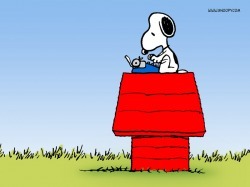
IT'S A PLACE TO:
- THINK OUT LOUD
- DREAM
- SCHEME
- ASK QUESTIONS
- WONDER
- WANDER
- PLAN
- OBSERVE
- IMAGINE
- DESCRIBE
- EXPLAIN
- CREATE
- SHARE
- CARE
- COLLECT
- RESPOND
RULES TO FOLLOW WHEN WE WRITE:
1. Save everything; it’s all a part of the history of the piece of writing, and you never you know when you might want to use it.
2. Date and label everything you write to help you keep track of what you’ve done (e.g., notes, draft #1, brainstorming).
3. When a piece of writing is finished, clip everything together, including the drafts, notes, lists, editing checklist, and peer conferencing form, and file it in your permanent writing folder.
4. Record every piece of writing you finish on the form in your permanent writing folder.
5. Write on one sides of the paper only and always skip lines or type double-spaced. Both will make revision, polishing, and editing easier and more productive for you.
6. Draft your prose writing in sentences and paragraphs. Draft your poems in lines and stanzas. Don’t go back into a mess of text and try to create order. Format as you go. Refer to your proofreading list.
7. Gets into the habit of punctuating and spelling as conventionally as you can while you’re composing; this is what writers do.
8. Get into the habit of beginning each workshop by reading what you’ve already written. Establish where you are in the piece and pick up the momentum.
9. Understand that writing is thinking. Do nothing to distract other writers or me. Don’t put your words into our brains as we’re struggling to find our own.
10. When you confer with me or with partners, use a soft voice as I use when I talk to you: whisper.
11. When you need to confer with peers, use a conference area and record responses on a peer conference form so the writer has a reminder of what happened.
12. Write as well and as much as you can!
2. Date and label everything you write to help you keep track of what you’ve done (e.g., notes, draft #1, brainstorming).
3. When a piece of writing is finished, clip everything together, including the drafts, notes, lists, editing checklist, and peer conferencing form, and file it in your permanent writing folder.
4. Record every piece of writing you finish on the form in your permanent writing folder.
5. Write on one sides of the paper only and always skip lines or type double-spaced. Both will make revision, polishing, and editing easier and more productive for you.
6. Draft your prose writing in sentences and paragraphs. Draft your poems in lines and stanzas. Don’t go back into a mess of text and try to create order. Format as you go. Refer to your proofreading list.
7. Gets into the habit of punctuating and spelling as conventionally as you can while you’re composing; this is what writers do.
8. Get into the habit of beginning each workshop by reading what you’ve already written. Establish where you are in the piece and pick up the momentum.
9. Understand that writing is thinking. Do nothing to distract other writers or me. Don’t put your words into our brains as we’re struggling to find our own.
10. When you confer with me or with partners, use a soft voice as I use when I talk to you: whisper.
11. When you need to confer with peers, use a conference area and record responses on a peer conference form so the writer has a reminder of what happened.
12. Write as well and as much as you can!
